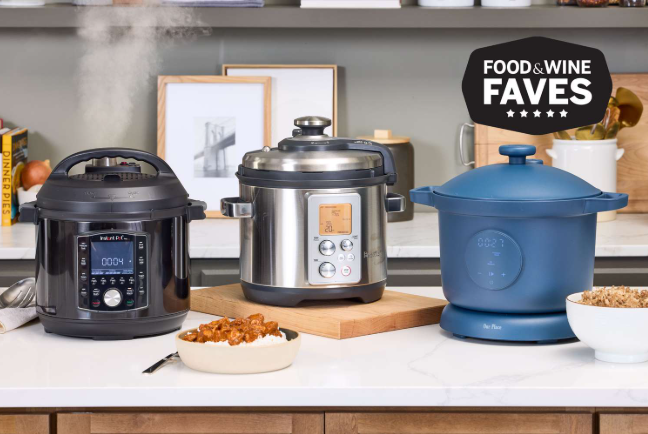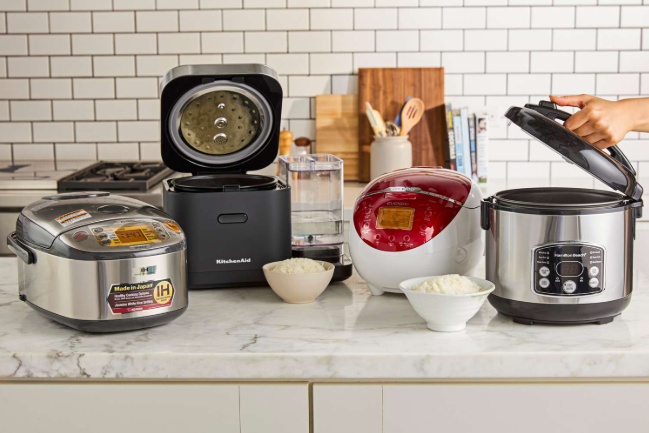Electric cookers have revolutionized modern kitchens, offering convenience and versatility for preparing everything from fluffy rice to tender roasts. However, even the most advanced electric cooker 2025 models can encounter issues that disrupt your cooking. This electric cooker troubleshooting guide provides practical solutions to common problems, ensuring your appliance performs reliably. Whether you’re dealing with a burn warning, pressure issues, or power failures, we’ll cover fixes, cooker setup tips, cooker maintenance practices, and cooker safety precautions to keep your kitchen running smoothly. Let’s dive into this best cooker guide to get your electric cooker back on track!
Why You Need an Electric Cooker Troubleshooting Guide
Electric cookers, such as pressure cookers (e.g., Instant Pot) or multicookers (e.g., Ninja Foodi), are complex appliances with components like heating elements, sensors, and digital controls. Issues can arise from improper use, wear and tear, or electrical faults, leading to frustration during meal prep. This electric cooker troubleshooting guide helps you diagnose and resolve problems quickly, saving time and avoiding costly repairs. By understanding how to address issues like steam leaks or error codes, you can extend your cooker’s lifespan and enjoy hassle-free cooking. For more insights, explore this electric cooker resource.

Common Electric Cooker Issues and Fixes
Below are the most common problems users face with electric cookers in 2025, along with step-by-step solutions. Always prioritize cooker safety by unplugging the appliance before inspecting or cleaning unless otherwise noted.
1. Cooker Won’t Turn On
Symptoms: The display is blank, buttons are unresponsive, or there’s no power indication.
Causes and Fixes:
- Faulty Power Connection: Ensure the cooker is plugged into a grounded outlet. Test the outlet with another device (e.g., a lamp) to confirm it’s functional. If the outlet is faulty, contact an electrician.
- Tripped Circuit Breaker: Check your home’s breaker box for a tripped circuit or blown fuse. Reset the breaker or replace the fuse, then retry the cooker.
- Damaged Power Cord: Inspect the cord for fraying or damage. If damaged, replace it with a manufacturer-approved cord to safely connect electric cooker.
- Control Board Failure: Unplug the cooker for 10–15 minutes to reset the system. If it still doesn’t turn on, the control board may be faulty—contact the manufacturer for repair options.
2. Burn Warning or Food Sticking
Symptoms: The cooker displays a “Burn” error, or food sticks to the pot, causing scorching.
Causes and Fixes:
- Low Liquid Levels: Pressure cooking requires at least 1 cup (240 ml) of thin liquid (e.g., water or broth). Add more liquid, stir, and restart the cycle.
- Food Residue: Scrape stuck food from the pot’s base with a non-abrasive spatula. Clean thoroughly before the next use.
- Overfilled Pot: Exceeding the 2/3 fill line can cause burning. Remove excess ingredients and try again.
- Worn Nonstick Coating: If the pot’s coating is scratched, food may stick. Replace the pot with a compatible one, typically costing $15–$30.
3. Slow or No Pressure Buildup
Symptoms: The cooker takes too long to pressurize or fails to reach pressure.
Causes and Fixes:
- Improperly Seated Sealing Ring: Check the silicone sealing ring for proper alignment, cracks, or wear. Realign or replace it (replace every 12–18 months).
- Clogged Steam Valve: Inspect the steam release valve for food particles or debris. Clean with a soft brush or cloth.
- Insufficient Liquid: Ensure at least 1 cup of thin liquid is used. Thick sauces (e.g., tomato-based) may require dilution to generate steam.
- Faulty Float Valve: The float valve may be stuck. Gently clean it to ensure it moves freely.
4. Steam Leaking from the Lid
Symptoms: Steam escapes from the lid’s edges during pressure cooking.
Causes and Fixes:
- Improper Lid Placement: Ensure the lid is locked correctly, following alignment markers or listening for a click.
- Dirty or Damaged Sealing Ring: Clean the sealing ring with soapy water or replace it if worn.
- Blocked Float Valve: Clean the float valve to ensure it seals properly.
- Overfilled Pot: Check that ingredients are below the maximum fill line to prevent pressure issues.
5. Cooker Not Heating Properly
Symptoms: Food is undercooked, or the cooker doesn’t reach the desired temperature.
Causes and Fixes:
- Incorrect Settings: Verify you’ve selected the correct mode (e.g., high pressure for meats, low for rice). Adjust time or temperature as needed.
- Faulty Heating Element: Inspect the base for burn marks or corrosion. If damaged, contact the manufacturer for repair.
- Temperature Sensor Issue: A faulty sensor may cause inaccurate heating. Test with a simple recipe (e.g., boiling water) and seek professional repair if it fails.
6. Error Codes or Unresponsive Controls
Symptoms: The display shows error codes (e.g., E1, E2, C6), or buttons don’t respond.
Causes and Fixes:
- Child Lock Engaged: Check if the child lock is activated and disable it per the manual.
- Overheating: Codes like E1 often indicate overheating. Let the cooker cool for 3–4 hours and ensure proper ventilation.
- Software Glitch: Unplug the cooker for 10–15 minutes to reset. For smart models, update the app or firmware.
- Control Board Failure: If resetting doesn’t work, the control board may need replacement. Contact customer support.
Cooker Setup: Preventing Issues from the Start
Proper cooker setup can prevent many problems:
- Unpack and Inspect: Check the pot, lid, sealing ring, and steam valve for damage.
- Clean Before Use: Wash all removable parts with warm, soapy water.
- Connect Electric Cooker: Plug into a stable, grounded outlet (1000–1500 watts). Avoid extension cords, which may not support the wattage.
- Water Test: Run a 5-minute pressure cycle with 1 cup of water to confirm functionality.
For smart models, download the companion app and connect to Wi-Fi for remote monitoring. Visit cooker guide for detailed setup tips.
Cooker Safety: Avoiding Risks During Troubleshooting
Cooker safety is paramount when diagnosing issues:
- Unplug Before Inspecting: Disconnect the cooker from power before cleaning or checking components to avoid electric shock.
- Handle Steam Carefully: Use oven mitts or a towel when releasing steam to prevent burns.
- Inspect for Damage: Don’t use a cooker with a damaged cord, pot, or sealing ring, as these pose safety risks.
- Keep Away from Children: Store the cooker out of reach and use child lock features if available.
If you notice sparking, smoke, or persistent circuit breaker tripping, unplug the cooker immediately and consult a professional.
Cooker Maintenance: Extending Your Cooker’s Lifespan
Regular cooker maintenance prevents issues and ensures consistent performance:
- Clean the Pot: Wash the inner pot after each use. Most are dishwasher-safe, but hand-washing preserves nonstick coatings.
- Sealing Ring Care: Soak the silicone ring in a solution of 1 tbsp baking soda and 1 cup water to remove odors. Replace every 12–18 months.
- Valve Cleaning: Use a soft brush to clean the steam and float valves to prevent clogs.
- Exterior Cleaning: Wipe the outer housing with a damp cloth, avoiding abrasive cleaners.
- Storage: Store the lid upside down to maintain the sealing ring’s shape and prevent mold.
For more cooker maintenance tips, check out cooking tips.

Cooker Battery Life and Power Considerations
Electric cookers don’t rely on cooker battery life, as they require a constant power supply (1000–1500 watts). Ensure a stable outlet, especially for off-grid setups like camping or RVs, where a generator may be needed. Smart models with Wi-Fi consume slightly more power, but energy-efficient designs minimize usage. If you experience power fluctuations, use a surge protector to safeguard the cooker’s electronics.
When to Seek Professional Help
Some issues require professional intervention:
- Electrical Issues: Sparking, smoke, or frequent breaker tripping indicates a serious fault. Contact an electrician or the manufacturer.
- Faulty Heating Element or Sensors: These repairs involve complex wiring and should be handled by a technician.
- Persistent Error Codes: If resetting doesn’t resolve codes like E1 or C6, professional diagnostics are needed.
Compare repair costs to the price of a new cooker, as fixing high-end models is often more cost-effective than replacing them.
Cooker Tips to Prevent Issues
These cooker tips can minimize problems:
- Use at least 1 cup of thin liquid for pressure cooking to ensure proper steam generation.
- Follow recipe guidelines and avoid overfilling the pot.
- Clean the cooker after each use to prevent residue buildup.
- Check the sealing ring and valves regularly for wear or debris.
- Use the correct cooking mode for your recipe (e.g., high pressure for meats, low for delicate foods).
User Feedback on Electric Cooker Troubleshooting
Users often resolve issues with simple fixes. One user shared, “My Instant Pot kept showing a burn warning until I added more water—problem solved!” Another noted, “Cleaning the steam valve fixed my slow pressure buildup.” Some report challenges with older models, like unresponsive buttons after heavy use, but resetting or replacing the sealing ring often works. For persistent issues, users recommend contacting customer support promptly.
How to Use Electric Cooker: Avoiding Common Mistakes
Learning how to use electric cooker correctly can prevent many issues:
- Read the Manual: Follow model-specific instructions for cooking times and liquid ratios.
- Use Proper Accessories: Use the included trivet or manufacturer-approved accessories to avoid damaging the pot.
- Avoid Overfilling: Respect the maximum fill line to prevent pressure issues or spills.
- Test New Recipes: Start with simple recipes (e.g., rice or hard-boiled eggs) to master the cooker’s settings.
Conclusion: Keep Your Electric Cooker Running Smoothly
This electric cooker troubleshooting guide equips you with the tools to fix common issues like burn warnings, steam leaks, and power failures. By following these solutions and focusing on cooker setup, cooker safety, and cooker maintenance, you can ensure your portable cooker delivers delicious meals without interruptions. Whether you’re using a budget-friendly model or the most advanced electric cooker 2025, these tips will maximize performance and longevity. For more recipes and troubleshooting advice, visit electriccookerreview.com to explore the best cooker guide for your kitchen!